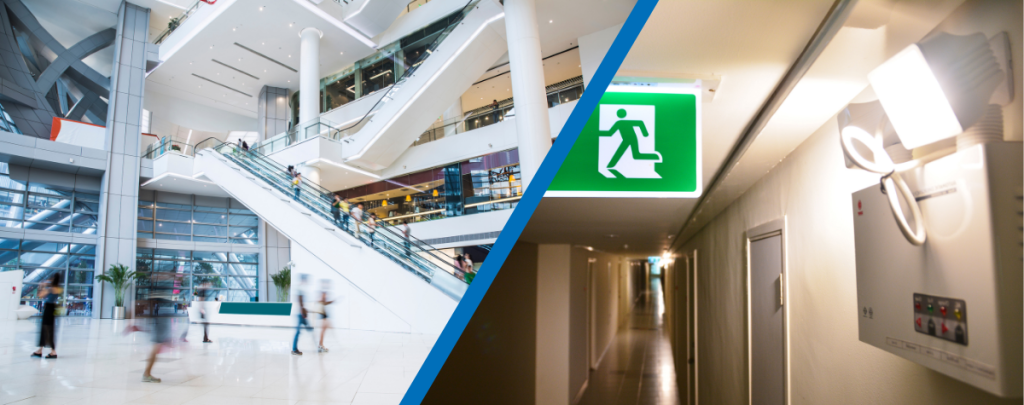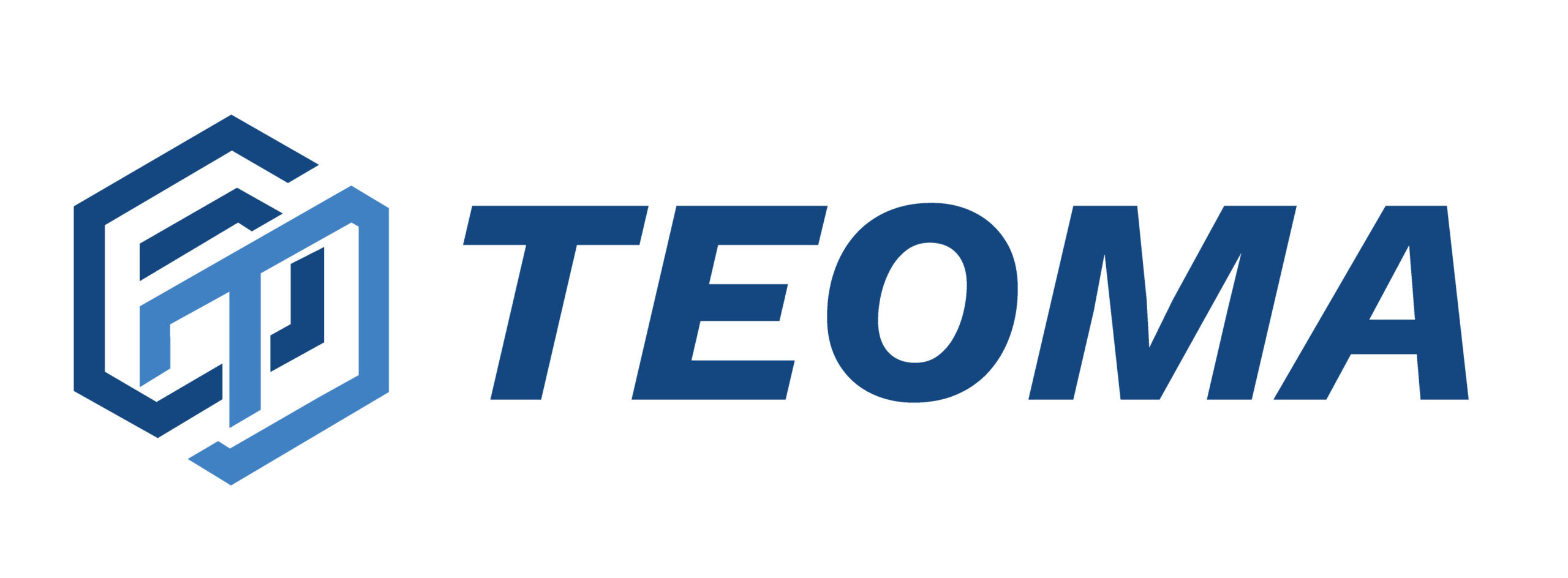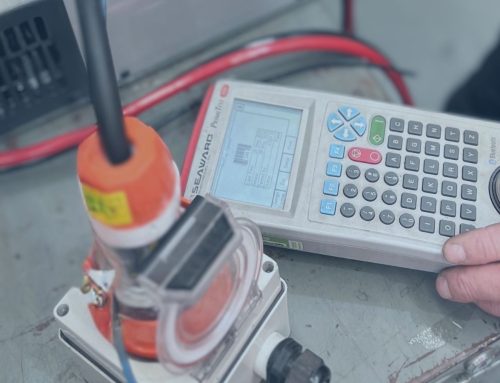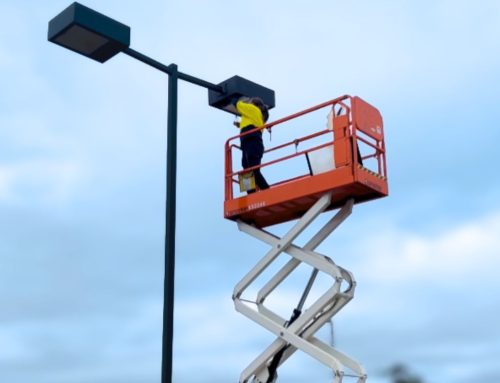The importance of routine servicing.
Emergency and exit lighting are useful and effective safety measures for commercial properties with an abundance of staff, students and patrons travelling throughout the building on a given day.
Exit and emergency lighting facilitate safe travel and passage through, and out of a building when standard lighting systems have failed due to power loss. It’s an intricate system, which requires maintenance from only experienced professionals.
It is important for businesses and organisations to understand Victoria’s exit and emergency lighting regulations to not only ensure electrical compliance but enable a clear, and safe passage of exit for all individuals in the building.
The National Construction Code (NCC) is the Australian and New Zealand building code (AS/NZS2293), and it determines the classes of buildings and areas within them, for which exert and emergency lighting are required.
To put it simply, any government or commercial building that is occupied by employees, customers or the general public will require emergency lighting, as do the common areas of multi-residential buildings. These include but are not limited to;
Basic Requirements – Compliance is Key
Each exit and emergency luminaire is fitted with a battery and is required to provide light for at least 90 minutes after the power fails. Exit signs need to be clearly visible to the occupants of a building and illuminated at all times.
They will be installed directly above exit doors, at the top of staircases, and at any change of direction along the way, directing people along the designated exit route to a final meeting or evacuation point.
As of 2005, every exit sign in Australia is required to feature an image of the green ‘running man’, the acknowledged and widely understood international symbol for an ‘exit’.
Individual commitments do widely vary based on the size of the building, however, if your building premises is larger than 300ms2 and has a room without adequate natural lighting it is a legal requirement to have emergency exit lighting in place.
A maintenance electrician can determine individual requirements for their properties after an inspection.
Frequently asked questions:
Significant proportions of industrial energy consumption go towards powering electric motors. Power consumption of motor peaks during start-up or heavy load. One way to reduce this load is by using variable speed drives.
1. How regularly should exit and emergency lights be tested?
All exits and emergency lights must be tested by a licenced electrician every 6 months to ensure they run for 90 minutes on battery by simulating a loss of power.
The results of the duration test, any defects/non-conformances in addition to maintenance history shall be recorded in a comprehensive logbook.
Demonstrating proof that the required repairs identified during the duration test have been carried out is necessary to demonstrate compliance.
2. Who can test emergency lighting?
An appropriately qualified person such as a licensed electrician should be used to test and inspect the components of any style of an emergency lighting system.
The AS/NZS2293 standard includes requirements for testing of circuits and sensing of supply to the test facility which can only be performed by someone with suitable qualifications.
Maintenance electricians are responsible for ensuring the maintenance log is correctly completed while ensuring these logs coincide with Health, Safety, Environment and Quality guidelines (HSEQ).
3. What to do when the system in place is not working?
It is recommended to develop an electrical maintenance plan with your electrician to ensure your emergency lighting system is in perfect health and all fittings are operational at all times.
However, If you notice any fittings that are not working and pose a risk to occupant safety, you should report them to an electrician or other responsible party immediately.
The twice-yearly scheduled duration tests should identify faults and list any defects for corrective action.

Establishing your emergency and exit lighting requirements for buildings
It is important that all parties responsible for a building are proactive in organising the servicing and maintenance of emergency lighting.
Engaging a maintenance electrician ensures businesses and organisations are stress-free, knowing compliance requirements associated with their electrical safety system in place is regularly being met.
In addition to regular upkeep and testing, maintenance electricians review past maintenance and service records to ensure any defects or non-conformance recorded during the previous tests and inspections have been rectified.
During their service they will additionally ensure that ;
- All exit signs and luminaire diffusers are clean of dirt and insects
- Will visually inspect each fitting for damage or obstructions
- Complete a thorough inspection of the duration test facility for correct operation
- Check directional arrows on exit signs are labelled as per the original design
This portion of maintenance is only a small fraction of the work undertaken during a regular electrical service, however, it is one of the most essential systems in place in buildings and can massively attribute to public safety and electrical compliance.
Emergency and exit lighting is just one part of making sure your building electronics are in working order.
Staff training on emergency evacuation procedures is an important part of risk management, but may not be enough in certain situations. Adequate lighting in the event of an emergency has the potential to save lives, so it’s vital to engage an electrician to test and maintain emergency exit lights and signs regularly.
Emergency lights are most effective when used in conjunction with a planned evacuation procedure so ensuring they’re functioning at complete capacity is a necessity.
Why Choose Teoma Electrical?
The electrical experts at Teoma are licenced professionals with over 20 years of experience regularly servicing an array of clients in Melbourne and the surrounding areas.
The team are reactive in their work and methodical in their thinking to create solutions instead of temporary fixes to electrical problems. Regular servicing is a vital aspect of managing business and school’s health and safety.
By working with Teoma, you will have access to a national network of highly qualified, and experienced electricians that can provide you with all the services you would expect from a reliable contractor.
All team members have both a National Police Background and Working with Children Checks, as they are regularly engaged to work with local businesses, schools and city councils. With fully stocked vans ready, we don’t take risks – let us look after your electrical needs. Call us today to set up your electrical Maintenance and Servicing.
We’re here to help!
Our team of highly skilled electricians at Teoma have over 30 years of experience regularly completing routine services and energy upgrades for commercial properties, manufacturers’ education facilities at a large scale.
Their reactive nature and extensive knowledge are used to prevent faults and prolong electrical systems in place.
By engaging our team of experienced and well-supported electricians you can be confident that you will have a complete solution, with minimal interruption to the operation of your site. Call us today to speak directly with our Service and Maintenance Manager.



